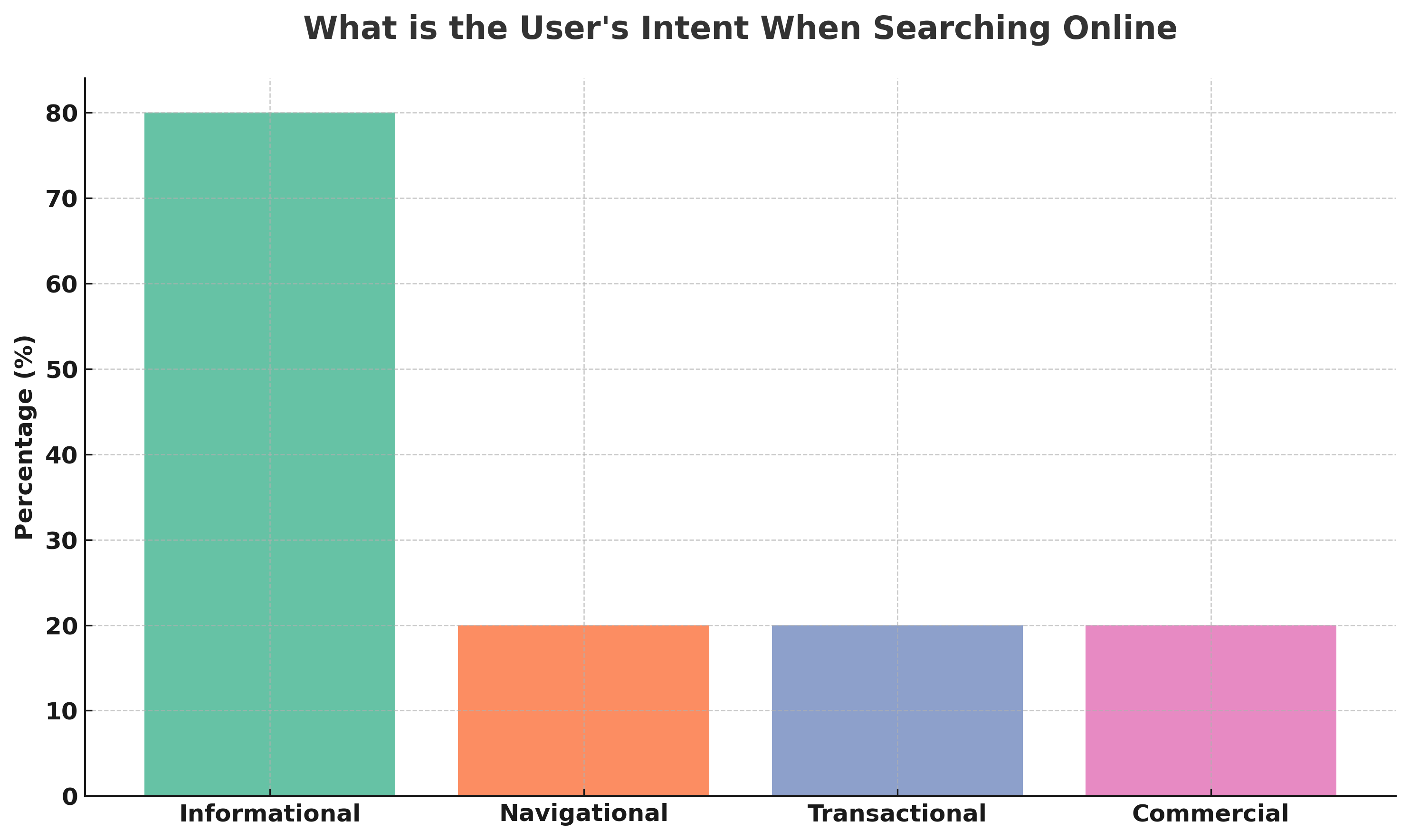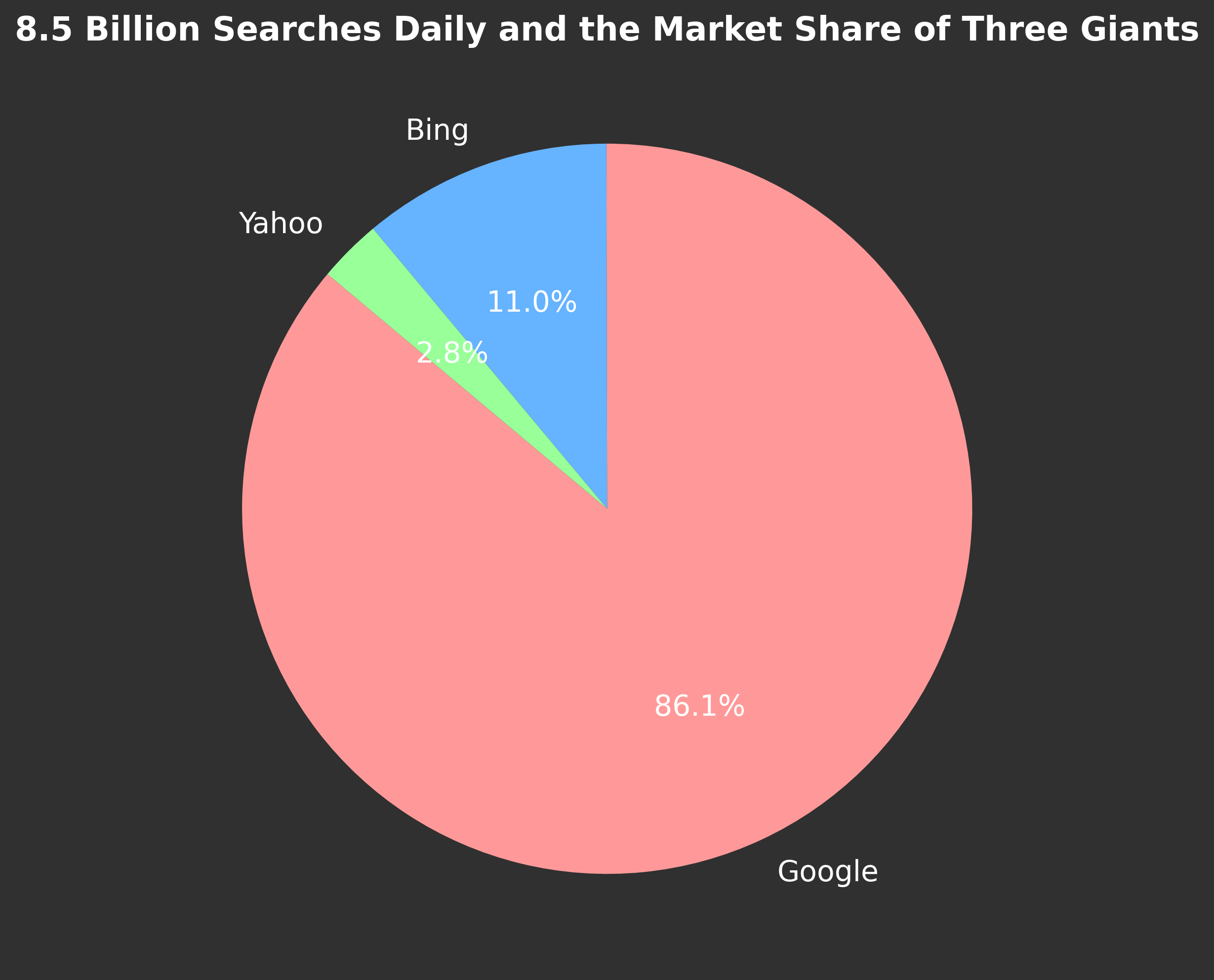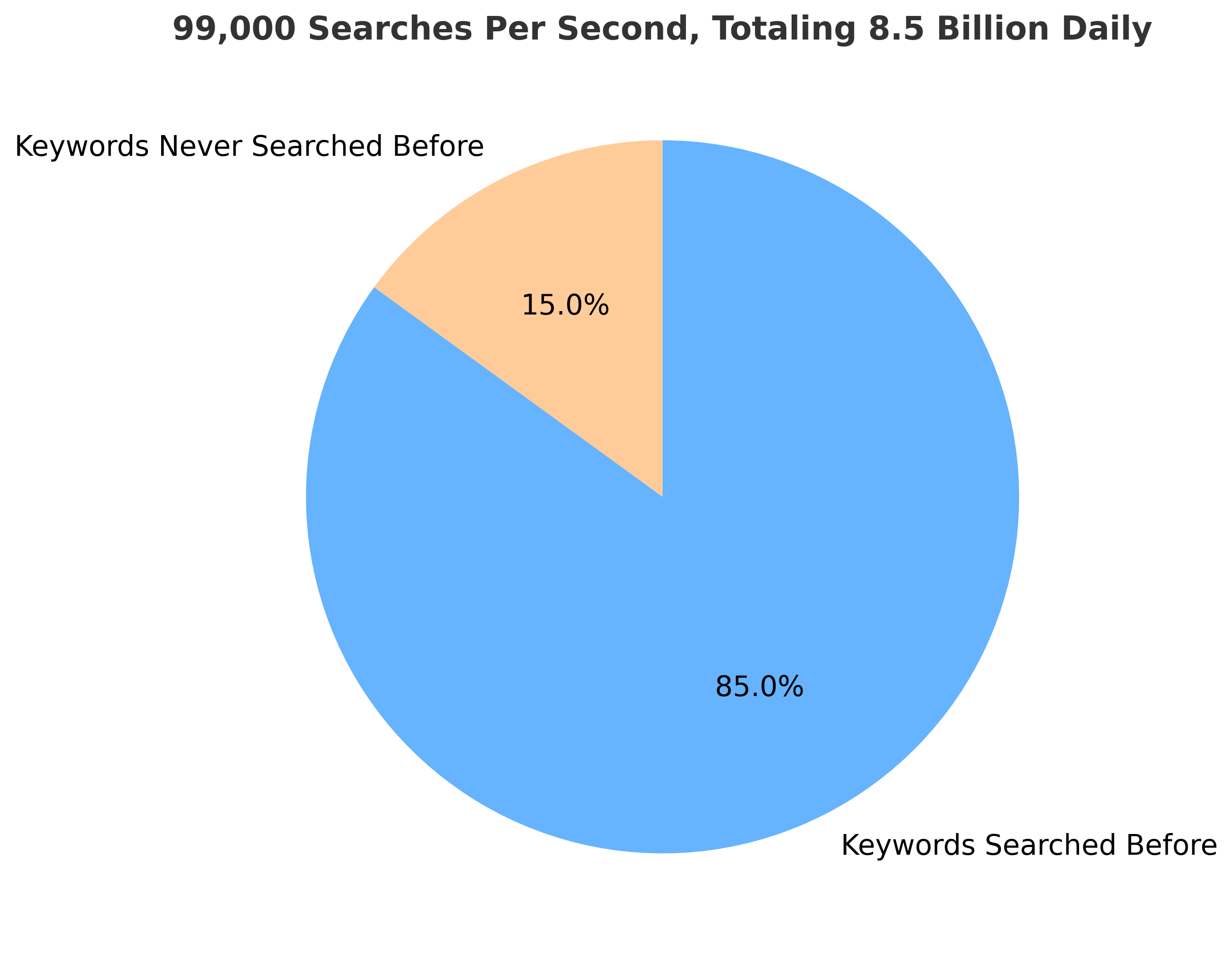
In simple terms, what does Google search intent mean?
You've likely encountered the terms 'search intent', 'keyword intent', or 'user intent' while working with a digital marketer or developing your SEO strategy. Regardless of the specific term used, it all boils down to one thing: when someone searches online, they have a particular goal in mind.
In the digital age, where information is at our fingertips, understanding the intent behind a Google search is crucial for businesses, content creators, and marketers alike. Google, the giant search engine, processes over 3.5 billion daily searches. That's an astounding number, indicating a vast array of queries from users worldwide. But have you ever wondered why people make these searches? What are they really looking for? This article delves into the world of Google search intents, exploring the different types and providing real, supportive facts and statistics to help you understand what users truly want.
The Essence of Search Intent
At its core, search intent (also known as user intent) is the purpose behind a search query. It's the "why" that drives a user to type a question or phrase into Google. Understanding search intent is not just about keywords; it's about grasping the user's underlying goals. Whether they're looking to buy a product, find a local business, or simply learn something new, each search reflects a specific intent.

Why Search Intent Matters
For businesses and content creators, understanding search intent is pivotal. It influences content creation, SEO strategies, and digital marketing efforts. Content that aligns with the user's search intent is more likely to rank higher on Google, attract more visitors, and convert these visitors into customers. In fact, a study by Backlinko revealed that content tailored to match search intent had a significantly higher chance of ranking in Google's top 10 search results.
The Four Main Types of Search Intent
Google's search intents can be categorized into four main types: informational, navigational, transactional, and commercial investigation. Let's explore each in detail.
- Informational Intent
With informational intent, users are on a quest for knowledge. They might be looking for the weather forecast, the height of the Eiffel Tower, or tips on baking a cake. These searches are purely informational, with no direct intention to purchase. According to a study by Moz, about 80% of searches are informational, highlighting the vast pool of users seeking knowledge on the web.
- Navigational Intent
Navigational searches are performed with the intention of visiting a specific website. For instance, typing "Facebook" or "YouTube" into Google because it's quicker than typing the entire URL. These searches indicate that the user already has a destination in mind. A Jumpshot study found that navigational searches account for about 10-15% of all searches, showcasing the importance of brand recognition and online presence.
- Transactional Intent
Transactional intent searches are made by users ready to buy or perform a specific action. These can range from "buy iPhone 12" to "sign up for yoga classes near me." These users are at the bottom of the sales funnel, making it crucial for e-commerce and service-based businesses to optimize for transactional intent. Data from Smart Insights suggests that conversion rates for transactional searches can be as high as 20%, depending on the industry.
- Commercial Intent
This type of search intent falls somewhere between informational and transactional. Users with commercial investigation intent are considering a purchase and are looking for the best options or reviews. Searches like "best smartphones 2023" or "top-rated dishwashers" are typical examples. A survey by BrightLocal found that 82% of consumers read online reviews for local businesses, underscoring the importance of positive reviews and comparisons in influencing purchase decisions.

Deciphering Search Intent: Beyond the Basics
Understanding search intent goes beyond categorizing queries. It's about delving into the nuances of each search. Google's algorithms have evolved to interpret the context and subtleties of queries, offering results that best match the user's intent. For instance, the search query "how to fix a leaky faucet" will predominantly return DIY guides and videos, acknowledging the user's likely intent to solve the problem themselves.
Below is a sample of do-it-yourself tutorials and videos designed for small businesses aiming to produce artwork without incurring any costs using online resources. These guides and videos offer step-by-step instructions and demonstrations for creating art pieces. They are specifically tailored to cater to the needs of small businesses seeking cost-effective ways to enhance their artistic creations. By following these tutorials, small business owners can unleash their creativity and produce stunning artwork without the burden of financial constraints using “Midjourney”. Additionally, the online nature of these resources ensures easy accessibility and convenience for users.
Leveraging Search Intent for SEO and Content Strategy
Around 15% of the searches conducted on Google are unique and have never been searched before. This information has been known for quite some time, but Google recently reiterated it through a quick reminder on Twitter. This highlights the significance of keeping an eye on keyword trends and data in order to identify and optimize for these new and exciting terms before they become popular. It is crucial to stay ahead of the game and capitalize on these opportunities.
To tap into the power of search intent, businesses and content creators must tailor their SEO and content strategies accordingly. This involves:
Keyword Research: Identifying keywords that match different search intents and incorporating them into content.
Content Creation: Producing content that aligns with the identified search intents, whether it's informative blog posts, product reviews, or landing pages for specific services. When it comes to content creation, it is vital to offer your readers something of value, whether it is informative or educational. It is crucial to avoid using keywords and meaningless phrases solely for the purpose of attracting visitors to your webpage. Engaging in such practices is absolutely unacceptable, as search engines will penalize you for it. This can lead to a high bounce rate for your content, which sends negative signals to search engines, indicating that readers and visitors have found your content, products, or services unhelpful and are therefore not staying on your page. Once again, I must emphasize that this is a big no!
User Experience: Optimizing the website's navigation and design to cater to the user's intent, ensuring they find what they're looking for quickly and efficiently. To give you an example, increase the spacing between your hyperlinks. Remember that most visitors use mobile devices, so navigate your page with two fingers. Don't make it difficult for them.

The Future of Search Intent
As technology advances and user behavior evolves, so does the understanding and importance of search intent. With the rise of voice search and AI, the ability to interpret and cater to user intent will become increasingly sophisticated. Businesses that stay ahead of these trends, understanding and implementing strategies based on search intent, will thrive in the digital landscape.
Here are some extra materials that can provide insight into the challenges of conducting business online:
- Buying Google Reviews Without Notice: A Brief Manual
- What's Next in Mobile App Trends for Boosting Sales?
- Who Leads the Digital Realm: Content or User Experience?
- Closing the Loop: How Inbound Marketing Fuels Sales
To sum up, Google search intents reveal the diverse needs and desires of users worldwide. By understanding and optimizing for these intents, businesses and content creators can create more targeted, effective content that meets users where they are. Whether it's providing answers, guiding them to a product, or helping them compare their options, aligning with search intent is key to digital success. So, the next time you craft a piece of content or plan your SEO strategy, remember to consider not just what users are searching for but why they're searching for it.
Embark on your journey towards successful Search Engine Optimization (SEO) with UnlimitedExposure.com, the premier digital marketing agency in Toronto. For the past 27 years, Unlimited Online Exposure, an innovative eCommerce website design company based in Toronto, has built a stellar reputation by creating over 1400 websites.
We leverage our extensive expertise and proven track record to elevate your online presence. Our SEO strategies and techniques are tailored to align with your unique marketing goals in Toronto. So, if you're in search of a “nearby SEO marketing agency “, don't hesitate to reach out to us. We would be thrilled to schedule a consultation with you, where we can fully grasp your preferences and objectives, and deliver concrete results for your business. Whether you're content with our comprehensive offerings or have specific requirements, we are fully equipped to adapt our services to meet your needs.
